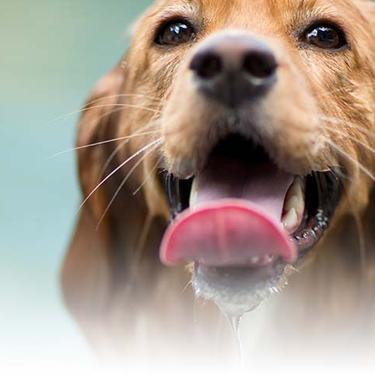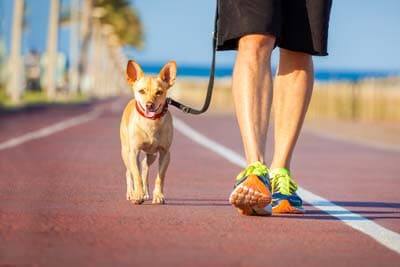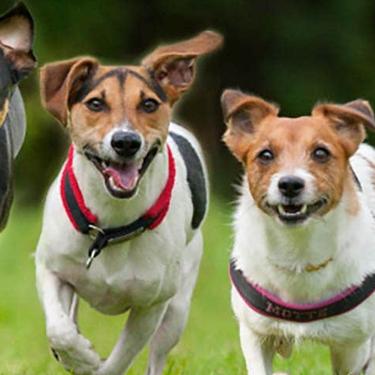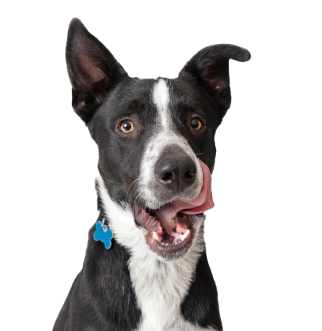
-
Find the right food for your pet
Take this quiz to see which food may be the best for your furry friend.
Find the right food for your pet
Take this quiz to see which food may be the best for your furry friend.
Featured products
 Adult Perfect Weight & Joint Support Chicken Recipe Dry Dog Food
Adult Perfect Weight & Joint Support Chicken Recipe Dry Dog FoodThis weight management and mobility support dog food was created with Hill’s unique understanding of the biology of overweight dogs.
Shop Now Adult 7+ Perfect Digestion Chicken, Whole Oats & Brown Rice Recipe Dog Food
Adult 7+ Perfect Digestion Chicken, Whole Oats & Brown Rice Recipe Dog FoodScience Diet's breakthrough nutrition supports ultimate digestive well-being & healthy microbiome for dogs age 7+
Shop Now Adult 7+ No Corn, Wheat, Soy Chicken & Brown Rice Dog Food
Adult 7+ No Corn, Wheat, Soy Chicken & Brown Rice Dog FoodSupports energy level and beautiful coat in mature dogs
Shop NowFeatured products
 Perfect Weight Salmon & Vegetable Canned Cat Food
Perfect Weight Salmon & Vegetable Canned Cat FoodOver 70% of cats lost weight within 10 weeks when fed this nutrition
Shop Now Adult Perfect Digestion Chicken, Barley & Whole Oats Recipe Cat Food
Adult Perfect Digestion Chicken, Barley & Whole Oats Recipe Cat FoodScience Diet's breakthrough nutrition supports ultimate digestive well-being & healthy microbiome
Shop Now Adult Savory Chicken Entrée Cat Food
Adult Savory Chicken Entrée Cat FoodPrecisely balanced nutrition with the delicious taste of savory minced chicken to help fuel the energy needs of cats during the prime of their life
Shop Now -
Dog
- Dog Tips & Articles
-
Health Category
- Weight
- Food & Environmental Sensitivities
- Urinary
- Digestive
- Joint
- Kidney
-
Life Stage
- Puppy Nutrition
- Adult Nutrition
- Senior Nutrition
Cat
- Cat Tips & Articles
-
Health Category
- Weight
- Skin & Food Sensitivities
- Urinary
- Digestive
- Kidney
-
Life Stage
- Kitten Nutrition
- Adult Nutrition
Featured articles
 Water
WaterDiscover why water is the most important nutrient for your dog or cat to live a healthy life. Find out how much water your pet should consume each day.
Read More The Incredible Science Behind Your Pet's Microbiome
The Incredible Science Behind Your Pet's MicrobiomeLearn what a pet's microbiome is, how it contributes to your pet's gut & overall health, and why nutrition is important in maintaining healthy microbiomes.
Read More Pet Food Storage Tips
Pet Food Storage TipsDiscover how and where to store your dry, as well as canned, dog and cat food. Learn how to find the "best before" dates on all Hill's pet food packaging.
Read More -
Find the right food for your pet
Find the right food for your pet


Exercise is an important part of your dog's physical and mental health, just like yours. And although there are many fitting activities you can join him in, running with your dog is an excellent way to burn calories and relieve stress for both of you.
Lack of exercise is one of the most common reasons for the weight and behavioral problems many dog parents face. With not enough outlets to expend their energy, puppies and adult dogs can become destructive. Not only does chewing upholstery cause you major distress, but it can be dangerous for your pet. Wondering where to get started with your running partner? Look no further. Running benefits your dog in the same ways it benefits you—so don't be afraid to put your trainers on and hit the same roads and trails you'd jog on yourself.
What to Bring
Once you've decided to start, you'll want to make sure you have all the necessary items to keep both of you safe and comfortable. Be sure to check off the following every time you leave for a run with your buddy:
- A secure harness with adequate identification
- Extra water for him (remember, he needs to hydrate too)
- Doggie bags to pick up and dispose of any waste
- A sturdy leash, either hands-free or standard, that won't break should your dog get excited and change pace suddenly
- Treats when your dog needs extra calories on a long run
What's It Like? What's He Like?

Check the weather. Dogs don't heat and cool their bodies like you do, so they can be more sensitive to extreme temperatures. If it's too hot your dog could incur heatstroke; too cold and frostbite can set in.
Before you begin, there are more personal precautions to take when running with your dog. First, you'll want to make sure running is something your dog actually wants to do! Not all breeds need much beyond a regular walk. A border collie or similarly active herding or working breed may love to join you for several miles, whereas a stockier lapdog doesn't want to move quite as quickly as you'd like. If running seems to be an enjoyable activity for both of you though, you're ready to take the next steps.
Physical Ability
Perhaps just as important as the desire to run is the capability of your dog. Age plays an important factor when deciding how and when to run with him. For naturally large breeds, running long distances before adulthood is not recommended. This is because the bones and joints in your growing puppy are susceptible to injuries before they're fully developed. Even if your dog is old enough, however, a veterinarian checkup prior to any running is one of the best things you can do. Dogs are stoic animals and hide injuries and illnesses quite well from their pet parents. Your vet will be able to tell you whether it's safe for your dog to jog. If you notice your dog laboring or lagging behind, it is best to stop and let him rest or walk the rest of the way. Never force your pup to run with you as it could create health issues for him.


Tasty Tips
Getting Him Started
Beginning a run with the go-ahead from your vet requires very little training. Basic obedience is usually all you need for a comfortable run together. Nonetheless, making sure your dog doesn't pull you around or weave in and out of your legs is an important safety measure for both of you; letting him lead the run can put your own muscles at risk if you exercise regularly. You'll also want to make sure your dog can stop, sit, and stay should you need to wait at any traffic lights or cross crowded trails. Above all, start slow and work your way up to longer runs to avoid injury, just as you would if you were beginning to run on your own for the first time.
You'll notice that as your dog gets into better shape, he'll be able to go longer distances at faster paces. During your run, make sure to check your dog's feet for any torn pads or nails. Although your pup might start limping if he's injured, he might be so happy to be out with you that he doesn't notice or show it. It's up to you to make sure he's safe during exercise.
If running with your dog becomes a regular in your routine, you might also want to talk to your veterinarian about proper nutrition. Just like athletes, active dogs need more calories and varying foods than your average couch potato. Proper nutrition and exercise are paramount to keeping your dog healthy, and together they'll provide your best friend with a long, happy life.


Dr. Sarah Wooten graduated from UC Davis School of Veterinary Medicine in 2002. A member of the American Society of Veterinary Journalists, Dr. Wooten divides her professional time between small animal practice in Greeley, Colorado, public speaking on associate issues, leadership, and client communication, and writing. She enjoys camping with her family, skiing, SCUBA, and participating in triathlons.
Related products

This weight management and mobility support dog food was created with Hill’s unique understanding of the biology of overweight dogs.

Delicious braised beef paired with tender vegetables in a succulent stew

Science Diet's breakthrough nutrition supports ultimate digestive well-being & healthy microbiome for dogs age 7+

Supports energy level and beautiful coat in mature dogs
Related articles

Learn about Hill's puppy food and the nutritional benefit & high quality ingredients that it contains for your pup.

Understand the role that Omega-6 and Omega-3 fatty acids play in your dog's overall health, and how you can ensure they are getting enough.

Proper nutrition for your pregnant or nursing dog is vital to her and her puppy's health. Learn what you should do provide her with the proper nutrients.

Large and giant breed puppies have different nutritional needs than other dogs. Learn how to provide the special care they need to grow up big and strong.

Put your dog on a diet without them knowing
Our low calorie formula helps you control your dog's weight. It's packed with high-quality protein for building lean muscles, and made with purposeful ingredients for a flavorful, nutritious meal. Clinically proven antioxidants, Vitamin C+E, help promote a healthy immune system.
Put your dog on a diet without them knowing
Our low calorie formula helps you control your dog's weight. It's packed with high-quality protein for building lean muscles, and made with purposeful ingredients for a flavorful, nutritious meal. Clinically proven antioxidants, Vitamin C+E, help promote a healthy immune system.

